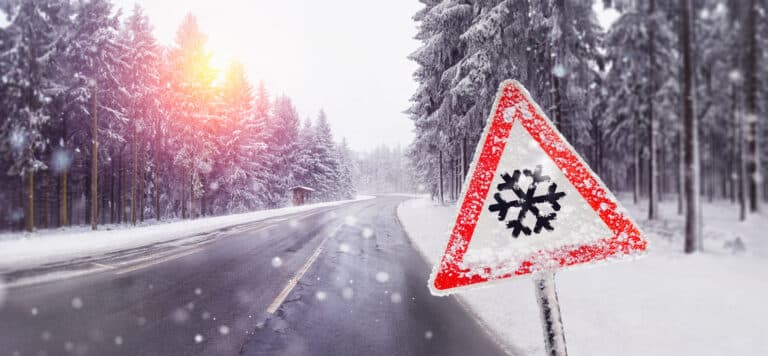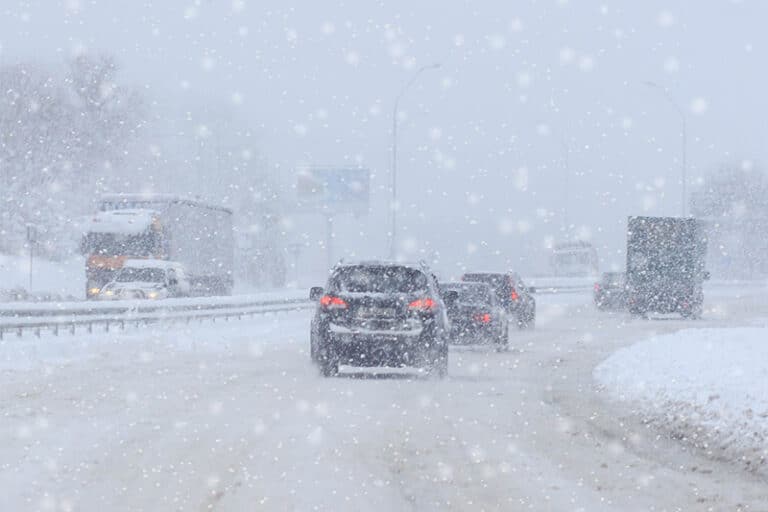Navigating Icy/Snowy Roads
With the winter season now upon us, it’s more crucial than ever to be vigilant and adapt our driving habits for the safety of ourselves and others on the road. Wintry weather conditions can be unpredictable and often lead to hazardous situations from skidding and sliding. Let’s discuss the common causes of winter driving accidents and share actionable advice on reducing your risk.
Understanding the Risks
Winter brings a variety of challenges for drivers. The most common causes of accidents in wintry conditions are:
- Black Ice: Ice can form on roads in freezing temperatures, creating a slippery surface that can cause vehicles to lose control. This layer is often nearly invisible (hence the term “black ice”). Even 1mm of ice can cause a car to lose traction completely.
- Snow/Slush: Snow pack on the roads (especially untreated) can easily cause a loss of traction. Even melting snow can create a layer of water that increases the risk of hydroplaning.
- Poor Visibility: Heavy snowfall or fog can significantly reduce visibility, making it difficult to see other vehicles, pedestrians, or road hazards.
Proactive Steps for Winter Driving Safety
- While we can’t control the weather, we can control how we respond to it. Here are some practical steps you can take to stay safe:
- Reduce Speed: In winter conditions, it’s essential to slow down. Reducing your speed allows you more time to react if you encounter a hazard.
- Use Winter Tires: These tires are designed to provide better traction, handling, and braking in cold, snowy, or icy conditions.
- Ensure Visibility: Keep your windshield and windows clear. Use your headlights when necessary, and always turn them on in poor visibility conditions.
- Stay Alert: Pay attention to the road and other drivers. Don’t use your phone or get distracted while driving. Maintain larger distances between vehicles to account for possible slipping.
- Steer into the Skid: If you lose traction on snow or ice, avoid the urge to turn the wheel against it. Gently allow the wheel to turn the tires into the skid to regain traction faster.
- Maintain Your Vehicle: Regularly check your car’s brakes, tires, lights, batteries, and wipers. A well-maintained vehicle is less likely to break down or cause problems on the road.
Accidents Can Still Happen
Even with the best precautions, accidents can still occur. If you or a loved one has been injured in a winter driving accident, knowing your rights and understanding what steps to take next is important. Even if nature made the roads treacherous, the other driver may still be at fault.
We’re here to help. Our personal injury law firm is experienced in dealing with winter driving accident cases, and we can help you get any compensation to which you’re entitled. Call our offices today.








